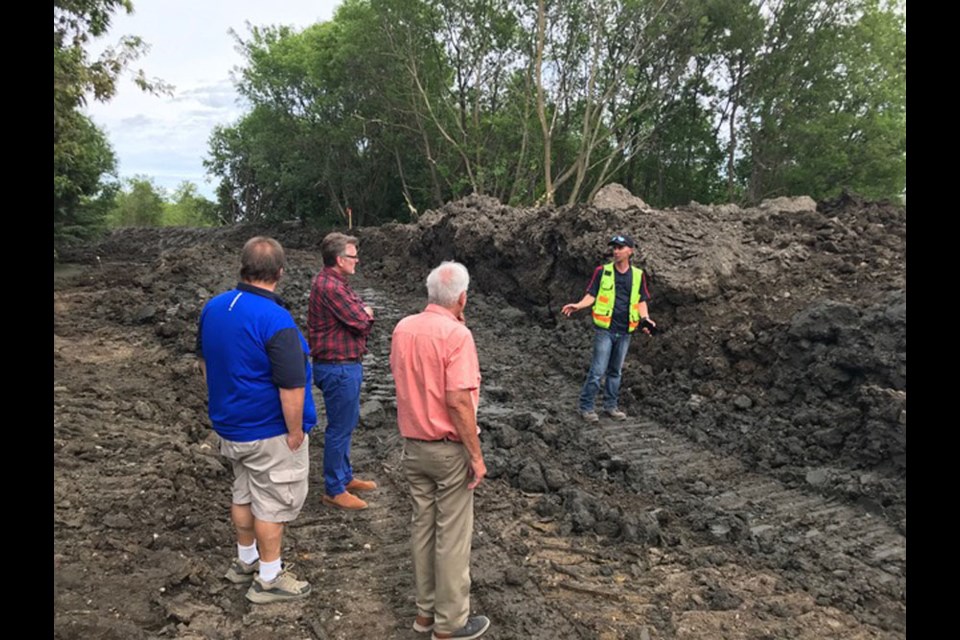Dear Premier and Ministers,
I am writing to request that the Government of Manitoba and Government of Canada work together and act immediately to provide financial and other disaster assistance to Manitoba municipalities, as well as individuals, businesses and institutions, to help recover from severe flooding in Western Manitoba.
I toured the hard-hit areas of Neepawa, Minnedosa, and the rural municipality of Minto-Odanah. Last week, a series of intense storms dropped 300 cm of rain - the equivalent of 6 months’ precipitation - in just two days.
In the town of Minnedosa, there has been enormous damage and flooding of homes and businesses. The water outside homes was sometimes more than a foot deep and basements were completely filled.
Many people are not covered by overland flooding insurance and their payouts may be capped at a fraction of the costs of what it will take to rebuild. I give the example of Karen Mitchell. She is a single mother who just returned home after going through cancer treatment. Her home is just off Main Street. The water in her house was more than a foot deep on the first floor, and filled the basement. All of her appliances and many of her belongings are ruined and there is damage to her foundation. Her insurance company has capped her payout at $5,000, but she likely faces costs in excess of $100,000.
The water washed out hundreds of metres of railroad track (which CP is currently repairing), and has cut through dozens of roads in the surrounding rural municipality of Minto-Odanah. A preliminary survey shows a minimum of 27 washed out roads.
By “washed out,” raging torrents have sliced through municipal and provincial roads, and culverts six meters in length have been washed hundreds of metres away. People and livestock alike have been stranded and a trip that used to take minutes may require a 40-minute detour.
In Neepawa, residential damage was less, but there was severe infrastructure damage. An entire lake, Park Lake, which was originally created 120 years ago, broke its banks and has emptied. A nearby bridge, which was recently assessed and determined to be structurally sound, collapsed.
There is also serious concern about another bridge over which Manitoba Hydro runs its fibreoptic cables. Because of the high water, there were concerns about the stability of the bridge, and there was a possibility the fibre-optic cable would either be ruptured or might have to be cut. This would cut the cable that provides service north to Dauphin.
I have not had an opportunity to visit the Town of Rivers, which has a significant dam that holds back a lake that was at risk of failure and required the evacuation of families and their farms.
The people of these communities have done an extraordinary job of pulling together, helping each other and making sure everyone was safe and that they got through without loss of life.
There is no question that municipalities, families and businesses will all need financial assistance to get through this. This has been deemed a “one-in-1,000-year” rain event.
Urgently required right now: • Targeted emergency disaster financial assistance for individuals, businesses, especially evacuees. During the Fort McMurray fires, the Red Cross distributed funds to individuals on an emergency basis.
• A commitment from the Federal and Provincial governments to cover the bulk of costs to repair / replace damaged infrastructure. Manitoba’s municipalities cannot run deficits and provincial funding has been frozen for four years. The infrastructure that requires repair includes fixing rural municipal roads, replacing bridges; water control structures will need to be assessed for upgrades.
• Canada and Manitoba have a $400-million housing fund that could be considered to assist in replacing homes for people who have been affected.
• In addition to the emergency responses and repairs, a longer-term assessment and investment in prevention must be considered as well. Aside from the fact that intense storms and summer flooding are indicators of climate change, there are a number of environmental and land use measures that could mitigate such disasters in the future.
A local farmer recommended investments to make sure that trees, brush and riparian zones are protected, maintained, and expanded where possible to hold back water.
Thank you for your attention on this issue, and if there is anything I can do to further advocate for the affected communities, please let me know.
Dougald Lamont




